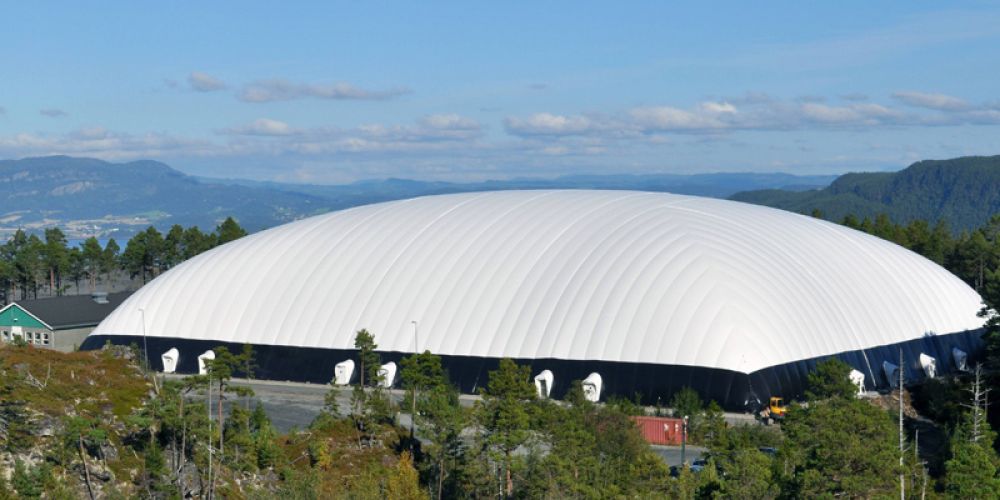
There are obvious differences between air-film buildings and membrane structures in terms of structure, use, materials, construction and characteristics.
Structural principle:
Air-film buildings: giant buildings created by the principle of air pressure support in a confined space. It mainly relies on internal air pressure to maintain shape and stability, without the need for steel structure or concrete support in traditional buildings.
Membrane structure buildings: thin film materials are covered on supporting structures, such as steel structures or concrete frames. Its stability mainly comes from its supporting structure, not internal air pressure.
Uses:
Air-film buildings: usually used to create temporary structures, such as inflatable tents, advertising balloons, air-film gymnasiums, children's playgrounds, etc. These structures are easy to build and disassemble, suitable for occasions that need to be deployed quickly.
Membrane structure buildings: mostly used for permanent or long-term projects, such as gymnasiums, exhibition centers, airport terminals, commercial centers, etc. They require more complex designs and structures to meet the needs of long-term use.
Materials:
Air-film buildings: usually made of multiple layers of polymer films or rubber materials, with high flexibility and elasticity.
Membrane structure building: The membrane material is usually made of polymer material, fiberglass or poly film material, and is used in combination with a supporting structure (such as steel structure).
Construction:
Air membrane building: The construction is usually simpler, just inflate the membrane. But regular inspection and maintenance are required to ensure the integrity of the membrane material and the stability of the air pressure.
Membrane structure building: The construction is usually more complicated and requires precise design and construction. Once built, they usually do not require frequent maintenance, but regular inspection and maintenance are still important.
Features:
Air membrane building: The structure is fragile and easily punctured by sharp objects or affected by bad weather. Its lifespan is usually short and suitable for temporary activities and needs.
Membrane structure building: It is usually more durable and can withstand various meteorological conditions and external pressures. The design is more stable and can be used for long-term commercial or public buildings.
Other features:
Air membrane building: It has light weight and does not require high geological conditions. It can be built directly on the original land. Processing and production are completed in the factory, and only installation work is carried out on site. The membrane material has good light transmittance and can fully automatically control indoor temperature, humidity, pressure and air quality detection.
Membrane structure building: light weight, good earthquake resistance, can create a huge unobstructed visual space. High artistry, can combine natural conditions, give full play to the imagination of architects. Good economy, can reduce lighting intensity and time during the day, save energy. Strong safety, membrane materials are flame retardant and high temperature resistant, can withstand large displacement.
There are significant differences between air membrane buildings and membrane structure buildings in terms of structural principles, uses, materials, construction and characteristics. Which building form to choose depends on the specific needs of the project, such as whether long-term or permanent construction is required, use, budget, environmental and meteorological conditions, and maintenance requirements.